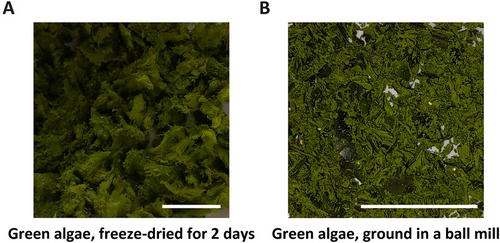下载PDF
{"title":"灾难后食品的营养成分。","authors":"Tara Mather, Niroshan Siva, Marjorie Jauregui, Pradip Poudel, Maria Julia de Lima Brossi, Joshua D. Lambert, Francesco Di Gioia, Erin L. Connolly, Charles T. Anderson","doi":"10.1002/cpz1.1110","DOIUrl":null,"url":null,"abstract":"<p>In addition to current challenges in food production arising from climate change, soil salinization, drought, flooding, and human-caused disruption, abrupt sunlight reduction scenarios (ASRS), e.g., a nuclear winter, supervolcano eruption, or large asteroid or comet strike, are catastrophes that would severely disrupt the global food supply and decimate normal agricultural practices. In such global catastrophes, teragrams of particulate matter, such as aerosols of soot, dust, and sulfates, would be injected into the stratosphere and block sunlight for multiple years. The reduction of incident sunlight would cause a decrease in temperature and precipitation and major shifts to climate patterns leading to devastating reductions in agricultural production of traditional food crops. To survive a catastrophic ASRS or endure current and future disasters and famines, humans might need to rely on post-catastrophic foods, or those that could be foraged, grown, or produced under the new climate conditions to supplement reduced availability of traditional foods. These foods have sometimes been referred to as emergency, alternate, or resilient foods in the literature. While there is a growing body of work that summarizes potential post-catastrophic foods and their nutritional profiles based on existing data in the literature, this article documents a list of protocols to experimentally determine fundamental nutritional properties of post-catastrophic foods that can be used to assess the relative contributions of those foods to a balanced human diet that meets established nutritional requirements while avoiding toxic levels of nutrients. © 2024 The Author(s). Current Protocols published by Wiley Periodicals LLC.</p><p><b>Basic Protocol 1</b>: Total digestible glucans</p><p><b>Basic Protocol 2</b>: Apparent protein digestibility</p><p><b>Basic Protocol 3</b>: Vitamins B<sub>1</sub>, B<sub>3</sub>, B<sub>9</sub>, C, and D<sub>2</sub> by HPLC</p><p><b>Basic Protocol 4</b>: Total antioxidant activity (DPPH-scavenging activity)</p><p><b>Basic Protocol 5</b>: Total phenolic compounds <b>(</b>Folin–Ciocalteu reagent method<b>)</b></p><p><b>Basic Protocol 6</b>: Mineral content by ICP-OES</p>","PeriodicalId":93970,"journal":{"name":"Current protocols","volume":"4 8","pages":""},"PeriodicalIF":0.0000,"publicationDate":"2024-08-02","publicationTypes":"Journal Article","fieldsOfStudy":null,"isOpenAccess":false,"openAccessPdf":"https://onlinelibrary.wiley.com/doi/epdf/10.1002/cpz1.1110","citationCount":"0","resultStr":"{\"title\":\"Nutritional Composition of Post-Catastrophic Foods\",\"authors\":\"Tara Mather, Niroshan Siva, Marjorie Jauregui, Pradip Poudel, Maria Julia de Lima Brossi, Joshua D. Lambert, Francesco Di Gioia, Erin L. Connolly, Charles T. Anderson\",\"doi\":\"10.1002/cpz1.1110\",\"DOIUrl\":null,\"url\":null,\"abstract\":\"<p>In addition to current challenges in food production arising from climate change, soil salinization, drought, flooding, and human-caused disruption, abrupt sunlight reduction scenarios (ASRS), e.g., a nuclear winter, supervolcano eruption, or large asteroid or comet strike, are catastrophes that would severely disrupt the global food supply and decimate normal agricultural practices. In such global catastrophes, teragrams of particulate matter, such as aerosols of soot, dust, and sulfates, would be injected into the stratosphere and block sunlight for multiple years. The reduction of incident sunlight would cause a decrease in temperature and precipitation and major shifts to climate patterns leading to devastating reductions in agricultural production of traditional food crops. To survive a catastrophic ASRS or endure current and future disasters and famines, humans might need to rely on post-catastrophic foods, or those that could be foraged, grown, or produced under the new climate conditions to supplement reduced availability of traditional foods. These foods have sometimes been referred to as emergency, alternate, or resilient foods in the literature. While there is a growing body of work that summarizes potential post-catastrophic foods and their nutritional profiles based on existing data in the literature, this article documents a list of protocols to experimentally determine fundamental nutritional properties of post-catastrophic foods that can be used to assess the relative contributions of those foods to a balanced human diet that meets established nutritional requirements while avoiding toxic levels of nutrients. © 2024 The Author(s). Current Protocols published by Wiley Periodicals LLC.</p><p><b>Basic Protocol 1</b>: Total digestible glucans</p><p><b>Basic Protocol 2</b>: Apparent protein digestibility</p><p><b>Basic Protocol 3</b>: Vitamins B<sub>1</sub>, B<sub>3</sub>, B<sub>9</sub>, C, and D<sub>2</sub> by HPLC</p><p><b>Basic Protocol 4</b>: Total antioxidant activity (DPPH-scavenging activity)</p><p><b>Basic Protocol 5</b>: Total phenolic compounds <b>(</b>Folin–Ciocalteu reagent method<b>)</b></p><p><b>Basic Protocol 6</b>: Mineral content by ICP-OES</p>\",\"PeriodicalId\":93970,\"journal\":{\"name\":\"Current protocols\",\"volume\":\"4 8\",\"pages\":\"\"},\"PeriodicalIF\":0.0000,\"publicationDate\":\"2024-08-02\",\"publicationTypes\":\"Journal Article\",\"fieldsOfStudy\":null,\"isOpenAccess\":false,\"openAccessPdf\":\"https://onlinelibrary.wiley.com/doi/epdf/10.1002/cpz1.1110\",\"citationCount\":\"0\",\"resultStr\":null,\"platform\":\"Semanticscholar\",\"paperid\":null,\"PeriodicalName\":\"Current protocols\",\"FirstCategoryId\":\"1085\",\"ListUrlMain\":\"https://onlinelibrary.wiley.com/doi/10.1002/cpz1.1110\",\"RegionNum\":0,\"RegionCategory\":null,\"ArticlePicture\":[],\"TitleCN\":null,\"AbstractTextCN\":null,\"PMCID\":null,\"EPubDate\":\"\",\"PubModel\":\"\",\"JCR\":\"\",\"JCRName\":\"\",\"Score\":null,\"Total\":0}","platform":"Semanticscholar","paperid":null,"PeriodicalName":"Current protocols","FirstCategoryId":"1085","ListUrlMain":"https://onlinelibrary.wiley.com/doi/10.1002/cpz1.1110","RegionNum":0,"RegionCategory":null,"ArticlePicture":[],"TitleCN":null,"AbstractTextCN":null,"PMCID":null,"EPubDate":"","PubModel":"","JCR":"","JCRName":"","Score":null,"Total":0}
引用次数: 0
引用
批量引用
Nutritional Composition of Post-Catastrophic Foods
In addition to current challenges in food production arising from climate change, soil salinization, drought, flooding, and human-caused disruption, abrupt sunlight reduction scenarios (ASRS), e.g., a nuclear winter, supervolcano eruption, or large asteroid or comet strike, are catastrophes that would severely disrupt the global food supply and decimate normal agricultural practices. In such global catastrophes, teragrams of particulate matter, such as aerosols of soot, dust, and sulfates, would be injected into the stratosphere and block sunlight for multiple years. The reduction of incident sunlight would cause a decrease in temperature and precipitation and major shifts to climate patterns leading to devastating reductions in agricultural production of traditional food crops. To survive a catastrophic ASRS or endure current and future disasters and famines, humans might need to rely on post-catastrophic foods, or those that could be foraged, grown, or produced under the new climate conditions to supplement reduced availability of traditional foods. These foods have sometimes been referred to as emergency, alternate, or resilient foods in the literature. While there is a growing body of work that summarizes potential post-catastrophic foods and their nutritional profiles based on existing data in the literature, this article documents a list of protocols to experimentally determine fundamental nutritional properties of post-catastrophic foods that can be used to assess the relative contributions of those foods to a balanced human diet that meets established nutritional requirements while avoiding toxic levels of nutrients. © 2024 The Author(s). Current Protocols published by Wiley Periodicals LLC.
Basic Protocol 1 : Total digestible glucans
Basic Protocol 2 : Apparent protein digestibility
Basic Protocol 3 : Vitamins B1 , B3 , B9 , C, and D2 by HPLC
Basic Protocol 4 : Total antioxidant activity (DPPH-scavenging activity)
Basic Protocol 5 : Total phenolic compounds ( Folin–Ciocalteu reagent method)
Basic Protocol 6 : Mineral content by ICP-OES


